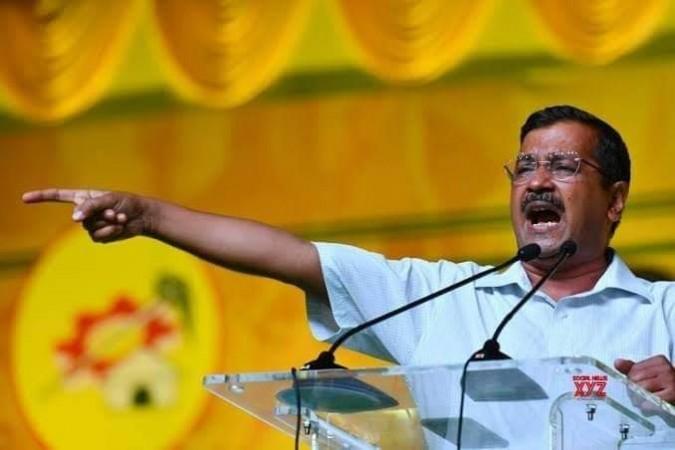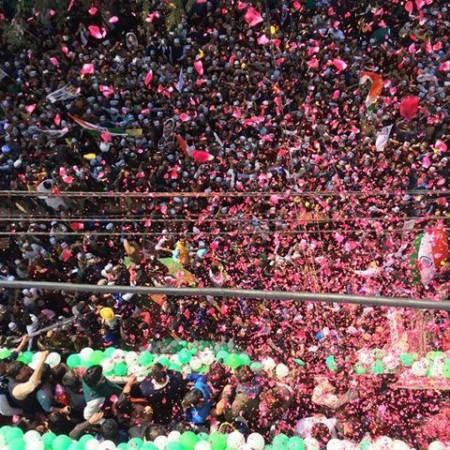The Arvind Kejriwal-led Aam Aadmi Party on Tuesday won the 2020 Delhi election with a landslide victory, bagging 62 seats of the total 70-member Legislative Assembly.
In a bitterly fought contest, the Aam Aadmi Party decimated Congress completely and limited Bhartiya Janata Party (BJP) to only 8 seats. The BJP, which ran a massive campaign under the leadership of Amit Shah, received little from its measures focussed on anti-CAA protest.

Arvind Kejriwal, who focussed on achievements of his government, termed his victory as the beginning of a "new kind of politics".
Here are five reasons why the Aam Aadmi Party swept Delhi elections:
1. No CM candidate: BJP's failure to announce a chief ministerial candidate gave Arvind Kejriwal an advantage in conveying that there is no able representative in BJP to replace him. Instead, the BJP relied on Manoj Tiwari, who seemed a no match to an articulate Arvind Kejriwal.
BJP's effort to aggrandize Narendra Modi's governance record in Delhi state election, too, failed to impress people.

2. Welfare schemes: The Aam Aadmi Party government provided electricity and water at subsidised rates to the people of Delhi. Last year, the Delhi Chief Minister had announced policies that benefitted the middle class and underprivileged.
Not only this, the Kejriwal-led Aam Aadmi Party announced free rides in Delhi Transport Corporation (DTC) buses and Delhi Metro for women and students.
The Aam Aadmi Party also focussed on developing government schools. From focussing on controlling arbitrary hike in fees by the private schools to working on the government school buildings, infrastructure and training teachers, it diligently worked to bring positive changes in Delhi government schools.
These public friendly decisions directly impacted families of the national capital.
People acknowledged the Aam Aadmi Party government's effort and voted for it this election.

3. Muslim voters: Muslim voters generally go for a non-BJP party in any election. This time, in the wake of anti-CAA protests at Shaheen Bagh, the feeling was more pronounced against the BJP.
During the 50-days plus protest, the divisive barbs by the BJP leaders mobilized the Muslim community to come out and vote in large numbers against the BJP.
4. Positive campaign: The Aam Aadmi Party made sure to distance itself from the negative campaign. The Arvind Kejriwal government focussed on highlighting the achievements of the party during its five-year period.
Moreover, Kejriwal embraced negative barbs as trophies. BJP's Parvesh Verma called him a "terrorist". Kejriwal latched on it, saying let the people of Delhi decided if he was a bhai (brother), beta (son), or a terrorist.

5. Soft Hindutva: In an attempt to neutralize the BJP's effort to polarise voter on communal lines and dismissing BJP's exclusive rights on Hindu religion, Kejriwal, despite provocation, did not visit Shaheen Bagh protest site and refrained from being labelled Muslim-leaning leader.
A few days before February 8 Assembly election, he presented himself as a devotee of Lord Hanuman and visited a temple with his family, appropriating large section of Hindu votes.
Keeping away from controversy and abstaining from a personal attack on Narendra Modi or BJP leader, Arvind Kejriwal played his government's achievements as a skilful master and proved that result of good governance gets the votes too.

















